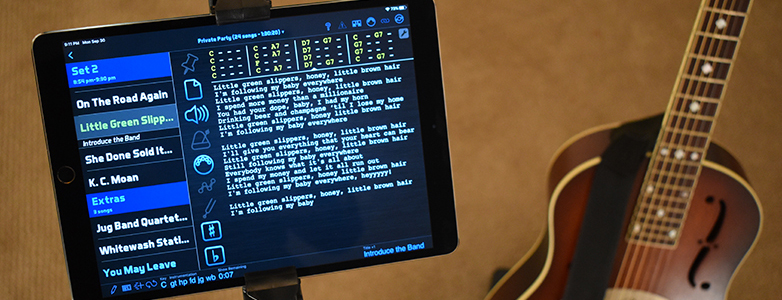2021. 5. 31. 09:36ㆍ카테고리 없음
Inter-App Communication in iOS 1. UIPasteboard is a method we can use to share data between apps. There is no UI implementation for UIPasteboard, but we can use it in other implementations.
If you specifically want to capture streaming audio that is broadcast from radio stations, use an internet radio recorder. A few popular apps include RadioSure Free, Nexus Radio, and Jobee, among others. Free Inter-application Audio Routing Utility for macOS. How to capture audio with Soundflower. Record any sounds coming from your Mac - for free. Your Mac is capable of producing sound as well as playing sound channeled from outside sources—devices plugged into the Mac’s USB- and sound input ports as well as audio streamed from the Internet. Google Duo is another audio calling app from Google. You can make audio calls only or you can use it for free video calling. You can not send or receive text messages with Google Duo, though. When you choose a contact to call, Google Duo puts other Google Duo users from your contact list at the very top of the list. If you are new to Intermedia Unite, download the desktop and mobile apps here to get started with the best united communications platform for small businesses. Inter-App Audio was first introduced in iOS 7. The idea behind this technology is pretty similar to the concept of VST/AU plugins for Mac/PC. This technology allows to stream music between apps. At the heart djay Pro is an innovative DJ Software with a modern user interface that provides flexible layers of functionality alongside a powerful music library into a single window interface.
Introduction
“Audiobus” and “Inter-App” Audio are two different but similar ways of sharing audio between applications on iOS. Audiobus was developed by the Amazing Michael Tyson and came first. Later, Apple invented their own way of doing what Audiobus already did and they called it Inter-App Audio. Because Audiobus came first, and because we know and love Michael Tyson, we give Audiobus top billing. But, there’s no reason you can’t get both things working in your app simultaneously, and that’s what we’ll be doing here.
This document will serve to introduce you to developing inter-app audio applications using AudioKit.
AudioKit aims to make developing audio simple, but for the case of inter-app audio, there’s only so much we can build into the framework and you’ll have a process to follow rather than just a usage API. Hence this tutorial was created to walk you through the process.

What you’ll build
There are basically three different things you can do with inter-app audio: you can generate audio to send to other applications, you can receive audio to process and filter and send back out to other apps, or you can receive audio and do something with that audio without sending it back out.
This tutorial, at least initially, will cover only the first two of these use cases. We’ll build a simple synthesizer application to demonstrate generating audio. Then, we’ll build a second application to take an audio stream and a nice sounding reverb to it. By separating these functions into two apps, you have more flexibility, but it is also very possible to have one app that can both generate and filter audio.
Even if you’re not interested in generating audio and only filtering audio, it is recommended that you follow the tutorial from start to finish as concepts will only be introduced once. You’ll learn the most by following along and building the applications on your machine, but the finished versions are also included in AudioKit’s Examples folder.
Table of Contents
- Sender Synth
- Starting the synth project
- Set Up the Synth (easy!)
- Set Up the User Interface
- Installing Audiobus
- Add the Audiobus Files
- Project Settings
- More Project Settings (for Sender apps)
- Audiobus and Registration
- Build the app to your device
- Conclusion (for Sender Apps)
- Filter Effects App
- Starting the filter effects project
- Set up the effects
- Set up the User Interface
- Install Audiobus
- Add the Audiobus Files
- Project Settings
- Register your App with Audiobus
- Conclusion (for Filter Apps)

The AudioKit example “Analog Synth X” has been upgraded to support Audiobus and IAA. It is a full-fledged app that appears on the App Store, but all of the code is available in the AudioKit repository.
In addition, we are finishing up a new synth that will also be open source and demonstrate Audiobus and IAA.
This tutorial stands on its own, but content for it has been shamelessly lifted from other sources, notably the Audiobus Integration Guide.
Soundflower
Free Inter-application Audio Routing Utility for macOS
Record any sounds coming from your Mac -- for free
Your Mac is capable of producing sound as well as playing sound channeled from outside sources—devices plugged into the Mac’s USB- and sound input ports as well as audio streamed from the Internet. Wouldn’t it be great if you could captures some of those sounds for later listening? You can. And you can for free with Soundflower. Here’s how it works.
Step 1: Download Soundflower
Download: Soundflower 1.6.6 Installer (includes SoundflowerBed) -- Use this for OS 10.6 - OS 10.8 - 179.75KB
Soundflower-1.6.6b.dmg

The first step involves finding a way to grab audio playing in one application—a Web browser, for example—and route it to an application that can capture that audio. Cycling ’74’s free Soundflower is that way. Soundflower is a system extension that lets you channel audio from one application to another. For example, you can take the audio playing from a movie in your Web browser and channel it into QuickTime Player’s audio input where you then record it.
Step 2: Configure Soundflower
After you’ve installed Soundflower launch the Sound system preference and you’ll see evidence of Soundflower in the Output and Input tabs. Select the Output tab and choose Soundflower (2ch). Do this and any sound that would normally come out of your Mac’s speakers is now routed through Soundflower. Any is the key word here. If your Mac makes any sound—not just the sound you’re trying to capture but also e-mail and Twitter alerts, for example—it will route that too.
Download Audio Apps
Step 3: Configure your capture application
You have a couple of applications on your Mac that can capture Soundflower’s audio—QuickTime Player and GarageBand. To configure QuickTime Player choose File -> New Audio Recording. In the Audio Recording window that appears click on the downward-pointing triangle to the right of the Record button. From the menu that appears choose Soundflower (2ch). When you’re ready to begin your capture, just click Record.
You set up GarageBand by launching the application and in the New Project window that appears choosing Acoustic Instrument. This creates a GarageBand project that contains a single digital audio track. Use the default tempo and time- and key-signature settings that appear in the New Project Template window and click the Create button. Open GarageBand's preferences, select the Audio/MIDI tab and from the Audio Output and Audio Input pop-up menus choose Soundflower (2ch). Close the Preferences window. If the Info pane for the track doesn’t appear, choose Track -> Show Track Info. In the Browse tab of the Info pane choose Stereo 1/2 Soundflower (2ch) from the Input source pop-up menu. When your Mac makes sound you should see it register in the track’s meters. Click Record to capture the audio.
Step 4: Monitor the Mac’s sound
When you choose Soundflower as your Mac’s audio output you can no longer hear it through attached speakers or headphones. In order for you to monitor what’s happening, launch the Soundflowerbed application (found in /Applications/Soundflower). Click the Soundflowerbed menu bar item that appears and choose your speakers or headphones from the menu. Now, not only will your audio application capture what your Mac plays, but you’ll be able to listen to the source audio as well. (You may want to do this before setting up QuickTime or GarageBand to capture your audio, but that's up to you.)
Again, any sound your Mac makes will be channeled through Soundflower so you’ll want to disable alert sounds or quit those applications that make them. Additionally, if you change your Mac’s volume, that change will be captured by the application that’s recording Soundflower’s sound. So, lay off the volume and mute controls.
Inter App Audio Mac Os
Special Thanks to: Christopher Breen (Macworld).